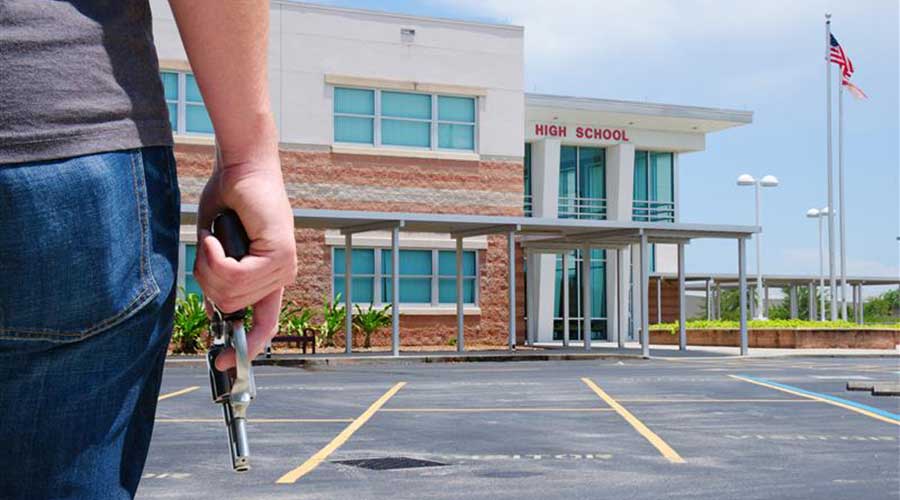Lamps: Beyond the End of Life
Expanding regulations at all levels are prompting managers to review their decisions related to handling and disposing of lighting system components
Institutional and commercial facilities are under increasing pressure to comply with regulations governing the handling and disposal of hazardous materials of all kinds. Some components of electronic devices contain materials — including mercury, cadmium, lead, barium, and arsenic — that are considered hazardous.
The end-of-life handling of some of these components, including lamps and ballasts, is regulated by either the federal Resource Conservation and Recovery Act (RCRA) or by state hazardous waste laws, or by both. Maintenance and engineering managers can stay in compliance with these evolving environmental regulations by tracking regulatory changes and monitoring activities in their facilities involving such electronic components.
One of the most important areas to monitor is the handling of lighting-system components.
Lamp Disposal
Consumers in this country dispose of more than 600 million fluorescent lamps every year. Standard fluorescent lamps pose a hazard to the environment because they do not pass the toxicity characteristic leaching procedure (TCLP), which means they contain more than 0.2 milligrams per liter of mercury.
Before the enactment of the universal waste rule (UWR), consumers had to either handle these products as hazardous waste or recycle them by using expensive hazardous waste haulers and providing substantial documentation.
The lamps covered by the UWR include both fluorescent and high-intensity-discharge — mercury, metal halide, and high-pressure sodium — lamps.
In response to public concern over the hazards that mercury presents to the environment, lamp manufacturers introduced so-called “low-mercury” lamps. These lamps now are called TCLP-compliant lamps, which indicates they are designed to pass the TCLP test. Low-mercury lamps have colored end caps, usually green.
Users can obtain normal lamp performance by specifying TCLP-compliant lamps. Many end users avoid any liability for lamp disposal by recycling their spent TCLP-compliant lamps, although these lamps do not need to be recycled.
Universal Waste Defined
Fluorescent lamps are considered spent when they are removed after their service life. Lamps that contain materials listed as hazardous waste — including mercury and lead — by the U.S. Environmental Protec-tion Agency (EPA) are considered hazardous waste.
In 1999, the UWR added hazardous waste lamps to the federal list of universal wastes regulated under RCRA. That step reduced the regulatory burden on generators when it comes to collecting, storing and transporting certain categories of hazardous wastes. Facilities still must fully comply with recycling, treatment and disposal requirements.
The EPA concluded that regulating spent hazardous waste lamps as universal waste would lead to better management of and compliance with hazardous waste requirements. A generator or third party that accumulates up to 5,000 kg — about 11,000 pounds — of universal waste on site is defined as a small quantity handler (SQH) and may store this maximum amount on site for up to one year. An SQH does not have to manifest shipments but must mark shipping containers in accordance with U.S. Department of Transportation requirements.
Organizations must label waste lamps as “Universal Waste — Lamps,” not “Hazardous Waste,” and they must ship them to another handler or to a destination facility. States can modify the UWR and add other universal waste in individual state regulations.
Managers should check with their states for exact regulations that apply to facilities. Most states have web sites with resources designed to enhance compliance.
Crushing Lamps
Universal waste handlers and transporters are allowed to crush spent lamps, but only to reduce their volume and only at the site where waste lamps are generated. As a practical matter, crushing must be done in a well-ventilated, monitored, closed system that is designed and operated to prevent mercury vapors from exceeding 0.1 mg/cubic meter, which is a time-weighted average in an eight-hour period. It makes more sense for many organizations to send spent lamps to the recycler intact. In some cases, recyclers will not take broken lamps.
For organizations that decide to crush lamps, the lamps must be stored in closed, non-leaking containers, and facility officials must notify the state EPA. Employees who handle universal waste lamps must be thoroughly familiar with emergency procedures. Even crushing operations that follow the UWR regulations can pose health risks if they lead to the release of sufficient mercury vapors.
Under the UWR, a lamp that does not pass the TCLP test and is broken must be cleaned up and placed in a container. The container must be closed, structurally sound, compatible with lamps, and lacking any evidence of spillage. This advice applies to any mercury-containing lamps, all except incandescent lamps.
In some states, lamps lose their universal waste status when they are broken, and they then must be handled as full hazardous waste. Managers can check with local, state or federal offices for the latest update in regulatory status or go to www.lamprecycle.org.
Many mistakenly believe that the phosphor coating on the inside of lamps contains phosphorous, while others believe it is dangerous. Chemically, it is chloro-fluor-phosphate, an inert substance. According to the National Electrical Manufacturers Association, a five-year study of phosphor by the Industrial Hygiene Foundation of the Mellon Institute found no significant adverse effects on humans from ingestion, inhalation, or skin or eye contact.
Recycling Companies
Responding to broader environmental regulations, many lamp and ballast recycling companies have expanded their operations in recent years to include electronics recycling. Some provide convenient packaging options for sending non-hazardous items via mail or parcel services.
One unique service, located in Columbus, Ohio, manages older computer equipment for corporations and sells any useable equipment through its web site after removing all client data and software through a proprietary process. The company also has a zero landfill policy to ensure it recycles all materials from units that cannot be reused.
As the options and requirements related to hazardous material handling continue to evolve, managers should keep informed on the latest regulations for disposal of their facilities’ waste so that they do not violate any applicable laws. Planning for changes in purchasing and disposal procedures can make a big difference for the organization.
John L. Fetters is principal of Effective Lighting Solutions Inc., a lighting consulting firm in Columbus, Ohio, providing energy-effective solutions for a variety of clients.
Related Topics:











